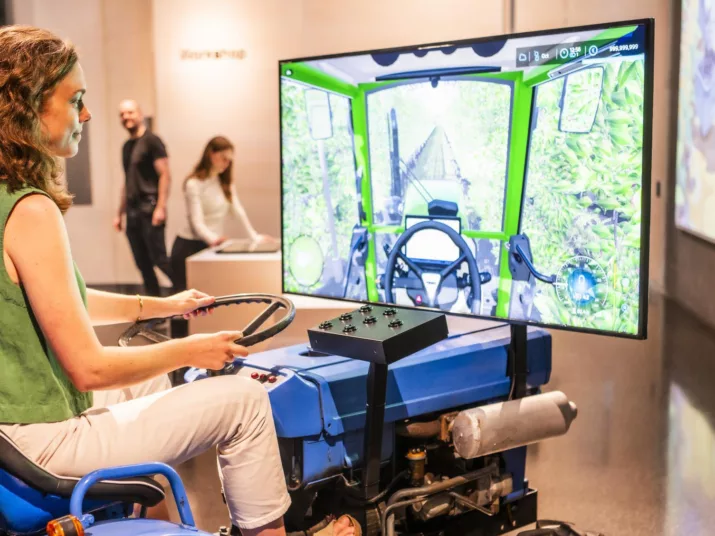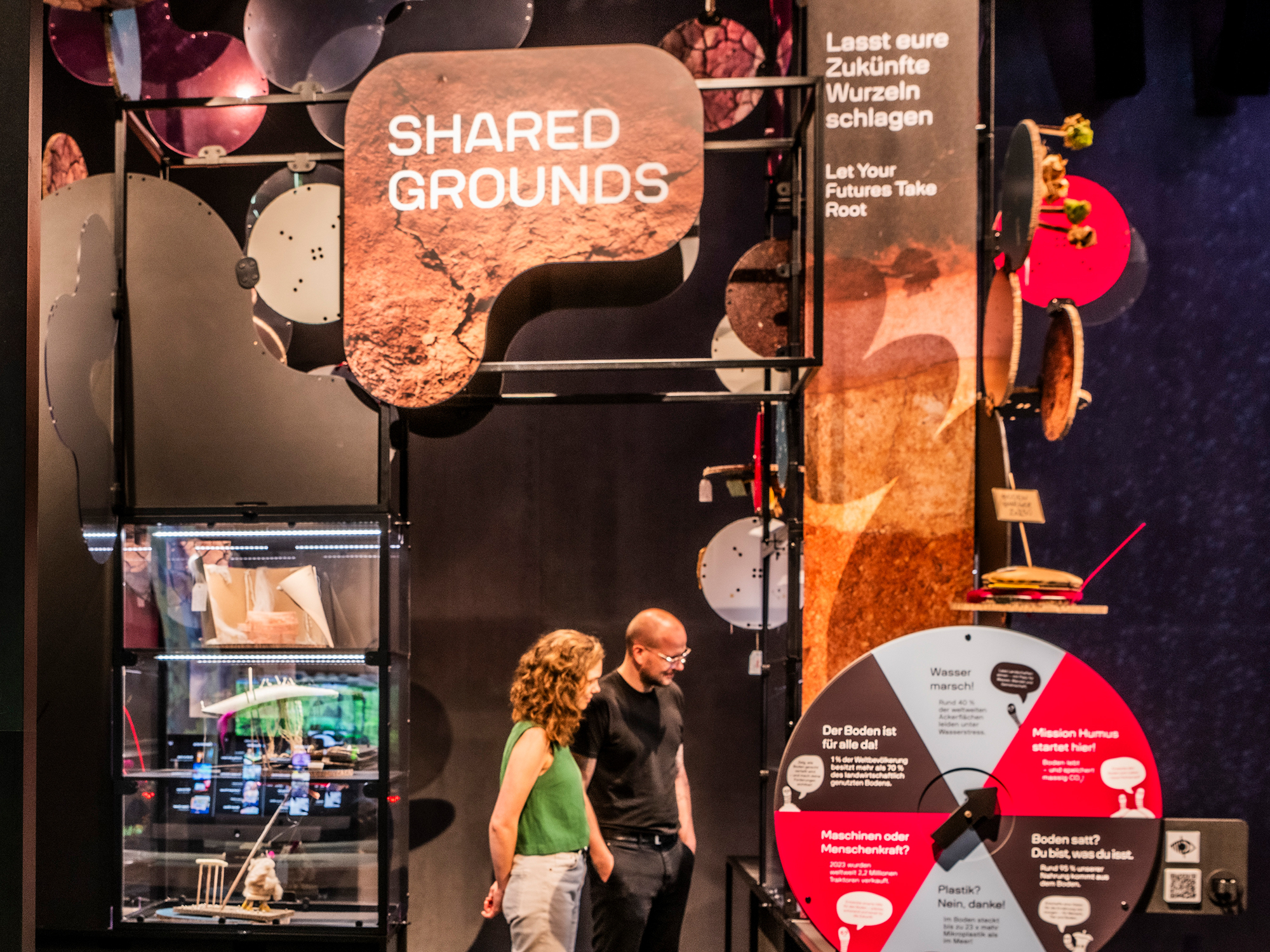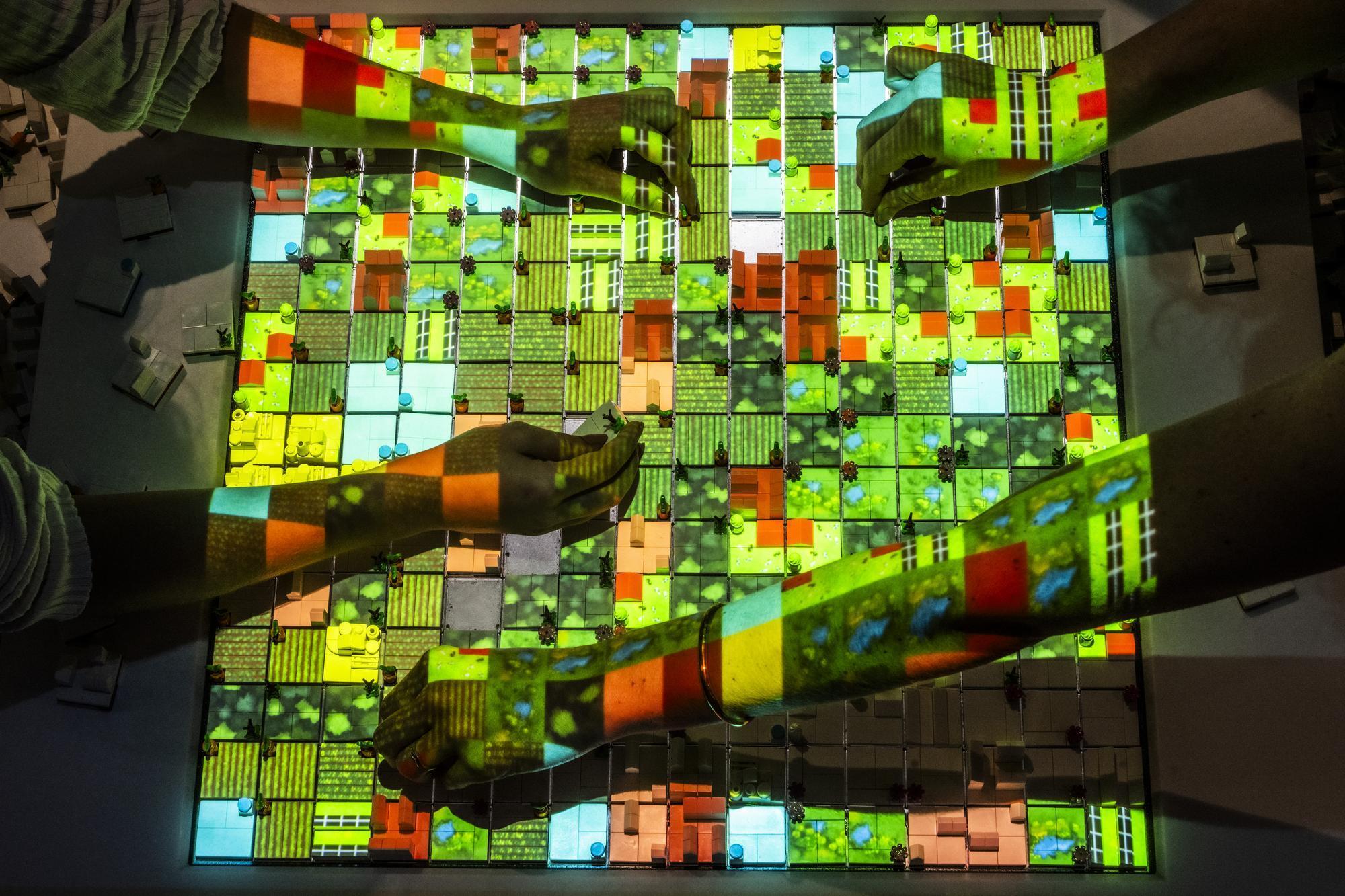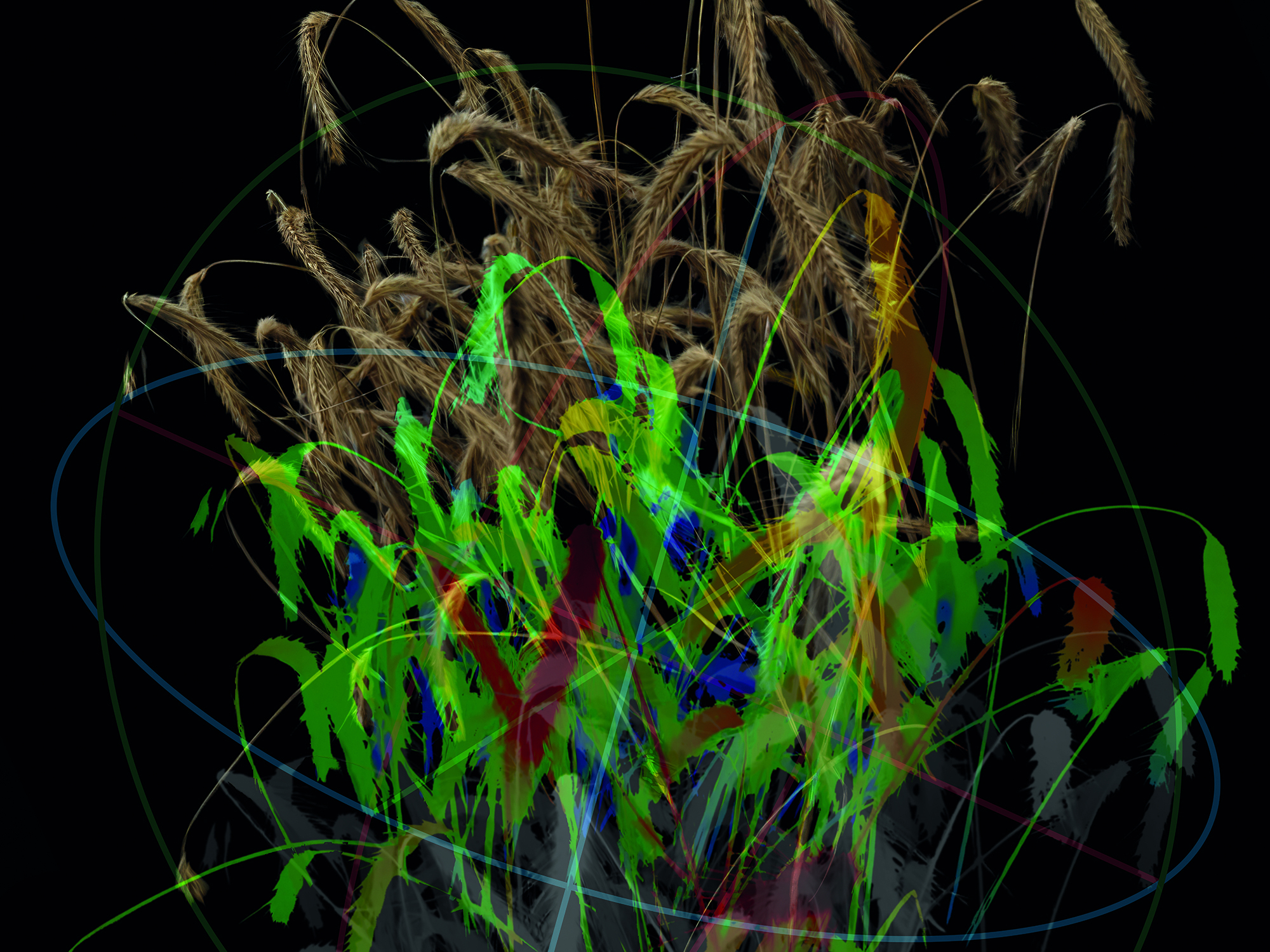
Sowing and Understanding Perspectives
Double Harvest
What might agriculture look like that simultaneously produces food, preserves biodiversity, and protects the climate? The exhibit invites you to explore a range of virtual landscapes, showing what sustainable farming might look like in practice.
Photo: Jan Windszus
At three interactive stations, you learn about different perspectives on major challenges and potential solutions for future agricultural systems.
The station “Agri-Photovoltaics” takes you on a virtual tractor ride through a 16-km² landscape. Across three varied scenarios, you can discover how power generation via photovoltaics and agriculture can be combined on the same land.
At the second station, you explore the concept of agroforestry – the combination of trees and shrubs with crop cultivation. An interactive tour illustrates how this nature-focused farming method promotes greater biodiversity.
The third station puts you in the perspective of a bumblebee. Towering blades of grass, oversized plants, and magnified animals create an immersive micro-world, bringing the diversity and importance of ecological systems vividly to life.
We don’t just want to visualise our complex research topics, but make them tangible. Our aim is to share knowledge about future agricultural scenarios in a playful way and tell a story. Anyone who enters the simulator can see straight away: this is a glimpse into the future of agriculture.
The focus is on engaging with specific solutions that have already been researched and partially tested.
Land is a scarce resource in Germany, and there are many conflicts surrounding it – think of wind turbines, for example. Even relatively new systems such as Agri-PV and agroforestry need to gain acceptance first, and not only from the farmers. So we are also concerned with involving society.
At an accompanying feedback station, you can share your expectations, impressions, hopes, and concerns about what you have experienced. These responses will be later systematically analysed.
We’re not only interested in how we as researchers envision the future – but also what society thinks about it. We are looking for dialogue,” says Katharina Porepp (TU Dresden).
“Double Harvest” makes it clear that sustainable agriculture can only be understood and shaped through the interplay of ecological, technological, and social factors – not as a simple sequence of steps, but as a dynamic, interlinked system.
“Double Harvest” is a platform developed jointly by experts from the Leibniz Centre for Agricultural Landscape Research (ZALF) and the Chair of Technical Design at TU Dresden. The exhibit is based on “Farming Simulator 22” by Giants Software GmbH (© 2025). Content on the topic of agri-photovoltaics was developed in the SynAgri-PV project. The project is funded by the Federal Ministry of Research, Technology and Space.


